If you've experienced sudden, scaly patches on your skin that are red, brown, pink, or white, it's probably a condition called pityriasis versicolor. Also known as tinea versicolor, p.versicolor is a common fungal infection where patches of the skin become somewhat scaly and discoloured. But we wanted to get a deeper insight on the skin issue — which is why we reached out to celebrity dermatologist, trichologist, and aesthetic dermatologist, Dr. Sadhana Deshmukh, to learn a little more about it.
- What Is Pityriasis Versicolor?
- Causes Of Pityriasis Versicolor
- Symptoms Of Pityriasis Versicolor
- Remedies For Pityriasis Versicolor
- Preventing Pityriasis Versicolor
What Is Pityriasis Versicolor?
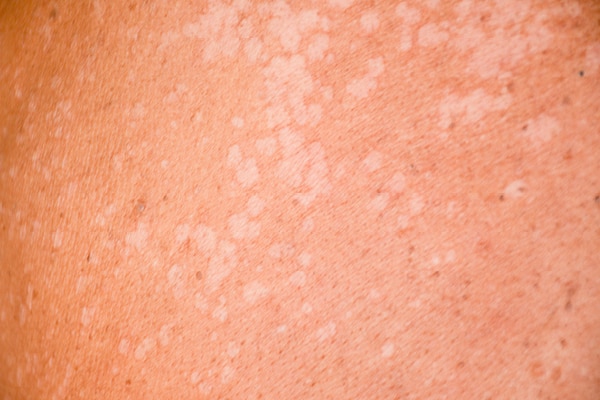
"Pityriasis means something that is scaly, and versicolor means something that has different colours. It could be white, brown or pink, so there are different colours which can come in this condition, which is why it's called pityriasis versicolor or tinea versicolor," she explained. "It is nothing but a fungal infection, and this fungus presents itself on our body as natural skin flora. It's a protective fungus of our body which sometimes overgrows, thus causing this condition," she further added.
Basically, your skin has a type of yeast that normally stays on it, generally without causing problems. But if it multiplies more than usual, it causes pityriasis versicolor. Mostly affecting the chest, upper arms, neck, tummy, and back, the unpleasant looking condition is sometimes itchy, but overall, harmless.
Causes Of Pityriasis Versicolor
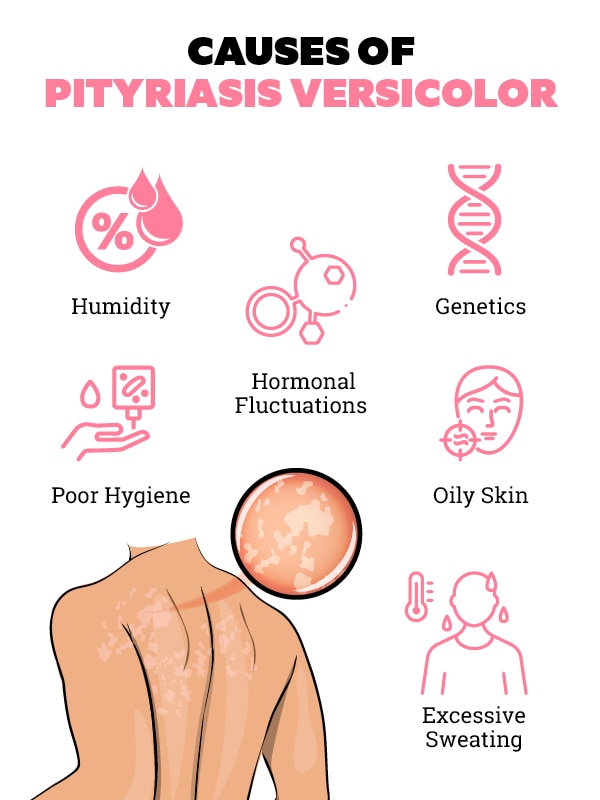
As mentioned before, pityriasis versicolor is caused when there is a rapid growth of the virus on the skin. According to Dr. Deshmukh, its causes can be generally attributed to as "Certain situations like humidity, sweating, overcrowding, any unhygienic situations or even genetics which can make the fungus overgrow, thus forming those spots on the body." These are, on the whole, situations where the yeast is given an environment to overgrow. Ahead, we're exploring these in further detail.
01. Humidity
High humidity levels are the perfect condition for yeast to grow, therefore making those who live in humid regions to be the most susceptible to pityriasis versicolor.
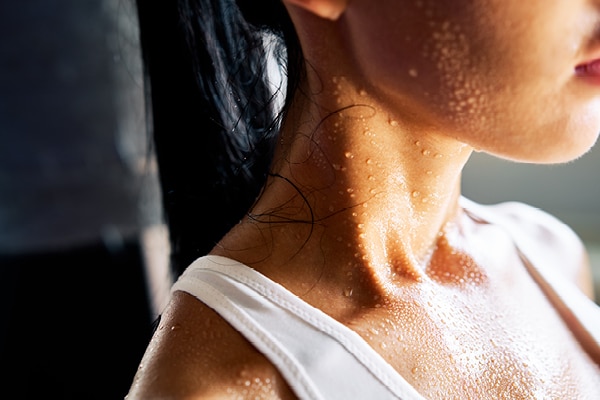
02. Excessive Sweating
Similar to humidity, those who sweat a lot are also susceptible to skin conditions, especially when you don't shower regularly after sweating. The dampness of the sweat makes for another contributory factor to the growth of the fungus, thus making sweating a prime factor.
03. Genetics
While this isn't a genetically passed-down condition per se, if you have a weakened immune system, you may be more prone to developing pityriasis versicolor since you may also experience more hormone fluctuations.
04. Poor Hygiene
Poor hygiene, such as living in overcrowded spaces, taking irregular showers if you have oily skin, or not cleaning your body properly post-working out may contribute to the growth of the fungus, thus causing the skin condition.
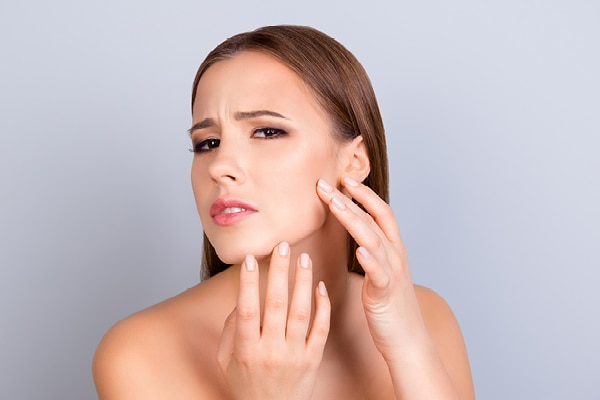
05. Oily Skin
If you have oily skin, your skin may overproduce sebum which could be a factor in promoting yeast growth. This could be another major cause for developing pityriasis versicolor.
06. Hormonal Fluctuations
Interestingly, tinea versicolor is caused more in teenagers than in any other age group. This is due to the hormonal fluctuations experienced by teens, which make them a prime candidate for getting the condition. However, it's important to note that this can occur in people of all ages, genders, and races.
Symptoms Of Pityriasis Versicolor
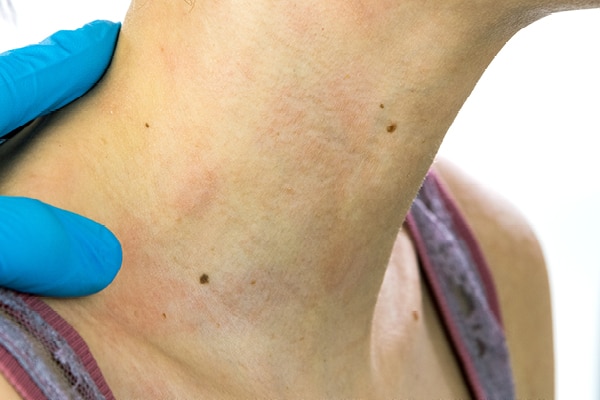
Luckily, pityriasis versicolor doesn't have many symptoms — apart from itching, the only symptom seems to be visual, with the patches. "It's mostly asymptomatic — there is little itching or scratching, if at all. It looks visually unpleasant, though," shares Dr. Deshmukh. Specific signs of the infection could include red, pink, white, or brown patches on the skin, dry and scaly patches and spots that don't look like the rest of your skin and seem unnatural, mostly found on your chest, upper arms, neck, tummy, and back.
However, p.versicolor can look like other skin diseases like vitiligo and pityriasis rosea, so it's always best to do a thorough diagnosis of the patch before starting treatment. The different ways to diagnose tinea versicolor apart from telling by the rash include are listed below.

01. Black Light Examination
The expert would use a UV light to examine the rashes on the body, hence the name. If the affected areas show up in a fluorescent, copper-ish colour, they're the result of pityriasis versicolor.
02. Microscopy
Microscopy is done to identify the skin infection by removing cells from the skin. The doctor would then proceed to soak them in potassium hydroxide and examine them under a microscope to identify the cause of the infection.
03. Skin Biopsy
Your doctor may also choose to do a skin biopsy by scraping some skin or scales from the affected area, then examining them under a microscope. It's less scary than it sounds, we promise!
Difference Between Tinea Versicolor And Pityriasis Versicolor
If us using the terms interchangeably didn't give you a fair idea, both are the same thing! "They are the same condition, these are 2 different names for the same condition," clarifies Dr. Deshmukh.
Remedies For Pityriasis Versicolor
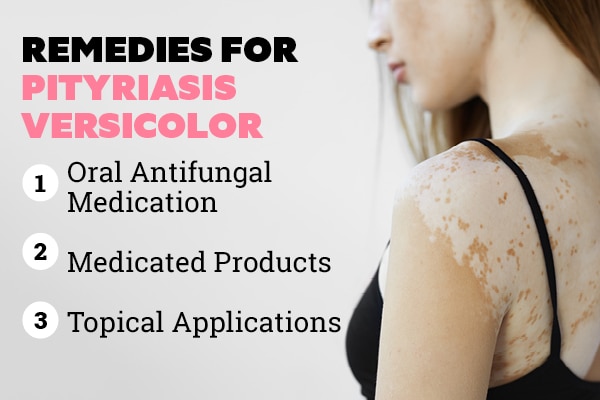
Luckily, pityriasis versicolor is extremely easy to treat. Don't be fooled by any guises of home remedies, BTW! "There are no home remedies for this condition," clarifies Dr. Deshmukh. "It can be treated using certain oral antifungal medications and applications which can be done with the prescription of a dermatologist. It takes 8-12 weeks to go completely. It can happen to people staying in crowded places, or students staying in hostels, or those who are into sports where after heavy workouts, your sweaty shirt stays on and you shower much later, due to the sweat accumulation," she further shares.
Ahead, we're listing down the three major treatments for pityriasis versicolor, so read on!
01. Oral Antifungal Medication
While treatments can vary based on different factors sometimes, the go-to for most professionals is to treat tinea versicolor with oral antifungal medication. Especially used when large areas of the body are infected, oral antifungal medication tackles the growth of the yeast on the body easily. These tablets need to be taken once a day for a few weeks to help the infection go away.

02. Medicated Products
Using medicated shampoos and body washes that are antifungal can be effective in killing the infection topically. Your doctor may prescribe medicated products with ingredients like clotrimazole, miconazole, and terbinafine to deal with the infection. Antifungal shampoos may cause some dryness or irritation, so they can always be diluted if your skin is particularly sensitive. Also, they need to be left on the affected areas of the skin in a lather and then rinsed off after 10 minutes.
03. Topical Applications
Topical creams such as those which contain ciclopirox and ketoconazole can help treat pityriasis versicolor. While these aren't available OTC, you can get them easily with a doctor's prescription. You need to apply these creams to the affected area a couple of times a day for several weeks in order to clear up the infection.
Preventing Pityriasis Versicolor
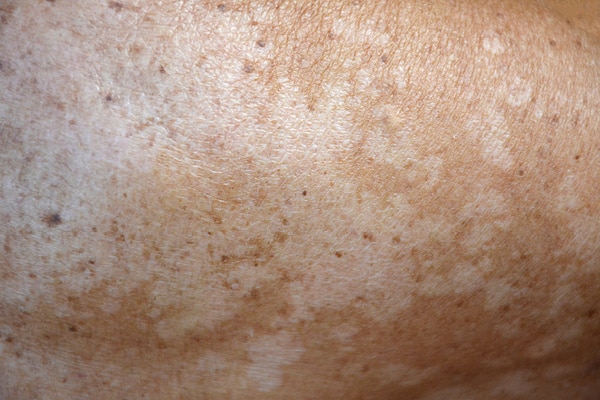
We always say that prevention is better than cure, and luckily, there are a few ways to prevent the infection so you don't have to deal with the pain of figuring out treatments for it. To prevent future infections, you can avoid excessive heat and humidity, avoid activities that make you sweat excessively, improve daily hygiene, and limit sun exposure.
In case you've been affected by pityriasis versicolor, you don't really have cause for concern — it's generally easily treatable and responsive to medication. However, the annoying bit about the infection is that it can reoccur, especially during warm, humid months and you may have to deal with it all over again. It's important to take preventive measures to ensure you don't get the skin infection recurrently, and see a dermatologist whenever the issue crops up again.
FAQs
01. Can pityriasis versicolor go away on its own?
While it may improve in cool, dry weather, if you have pityriasis versicolor, it can only go away with treatment.
02. How long does pityriasis versicolor take to clear?
While treatments usually last upto about a month, the signs of pityriasis versicolor can take between 8-12 weeks to disappear completely.


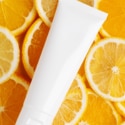






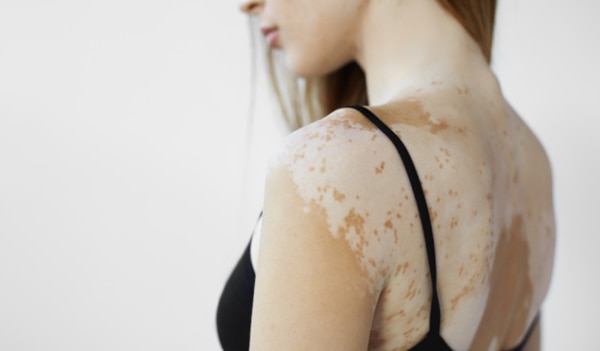


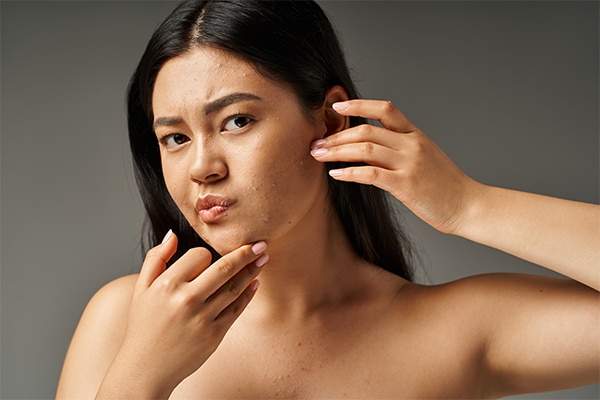



 Privacy Notice
Privacy Notice
Written by Nishtha Bhalla on 22nd Feb 2022
Nishtha is a freelance writer who loves all things beauty, fashion, culture, and lifestyle. With content covering a variety of topics, she brings a holistic, nuanced perspective to her writing. In her free time, she can be found watching reruns of The Office, reading anything she can get her hands on, and experimenting with astrology.